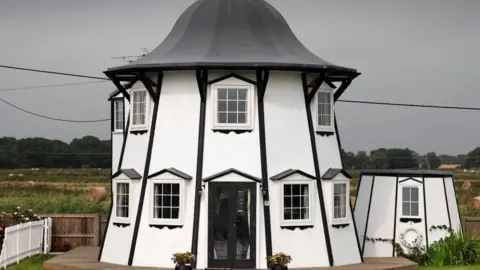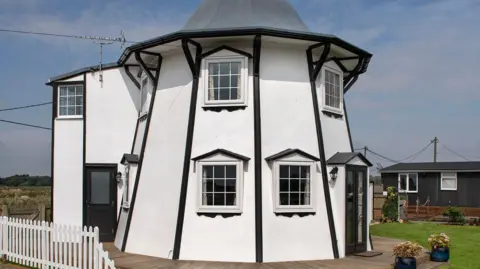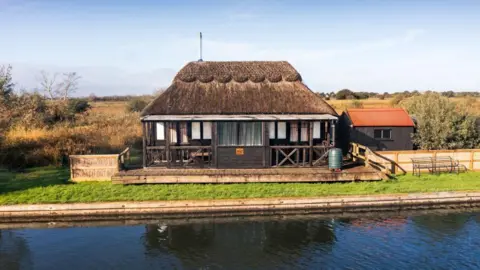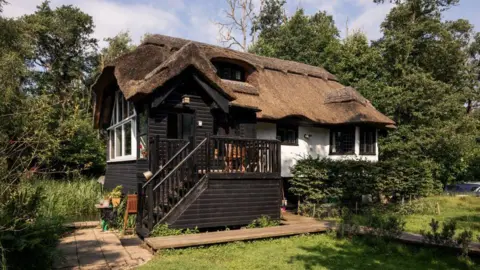Former helter-skelter among new listed buildings
 Historic England
Historic EnglandFive "unique" waterside properties, including a converted helter-skelter, have been given Grade II-listed status.
The buildings, in the Broads National Park in Norfolk, also include prefabricated structures made by the company that created Scott’s Antarctic expedition huts and one of the only remaining eel setts in England.
The properties were "distinctive, local landmarks", said Duncan Wilson, Historic England's chief executive.
The Broads Authority said it was important to protect such vulnerable buildings.
 Historic England
Historic EnglandThe Dutch Tutch in Potter Heigham began life as a helter-skelter at the end of the Britannia Pier in Great Yarmouth.
After a fire on the pier in 1909, the lower half of the fairground ride was used to create a two-storey holiday cottage, while the top portion was used to create an outbuilding.
 Historic England
Historic EnglandAnother of the listed buildings is Tower View, erected on the riverbank in Potter Heigham in the first decade of the 20th Century.
The bungalow was created using prefabricated materials produced by Norwich-based Boulton & Paul, which made the huts for Scott’s Antarctic expedition.
It began life as two huts bolted together when they were relocated to the riverbank.
 Historic England
Historic EnglandThe Eel Sett at Candle Dyke, Potter Heigham, is thought to be the last of its kind in England.
An eel sett was a place for eel catchers to put out nets at night and a room for their accommodation, typically in isolated and rural spots along the river.
It is thought to date from the early 20th Century and was in commercial use until 1992.
 Historic England
Historic EnglandThe Holt and Boathouse, also in Potter Heigham, is a waterside bungalow, also thought to be from the early 20th Century.
It was created for a Mr W. Boning who had a furnishing business in Great Yarmouth and much of its furniture was originally from his shop.
The bungalow’s design mirrors that of the already existing boathouse.
 Historic England
Historic EnglandStaithcote in Wroxham was first built as a boathouse in 1911 and extended with a waterside chalet above by 1913.
Historic England said it was "a particularly well-preserved building in the tradition of cottage orné," a rustic building of picturesque design.
“These characterful buildings are special to the Broads National Park and it’s important that they are protected and celebrated," said Mr Wilson.
Kayleigh Judson, Broads Authority heritage planning officer, said each of the "well- loved" chalets told a "unique story about bygone eras in the Broads”.
“The waterside is a harsh environment, and these structures are particularly vulnerable to change," she said.
"The new listings will help to preserve their special appearance by giving them the protection they deserve, so that their unique characteristics can be appreciated for generations to come.”
Follow Norfolk news on BBC Sounds, Facebook, Instagram and X.
